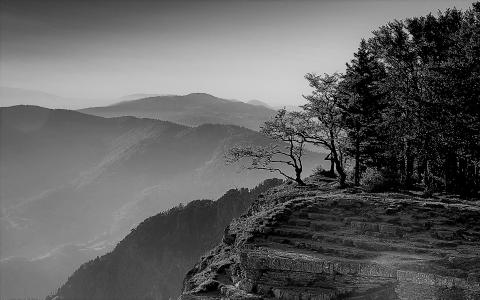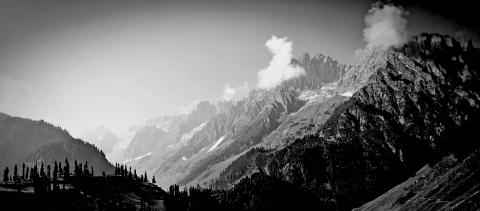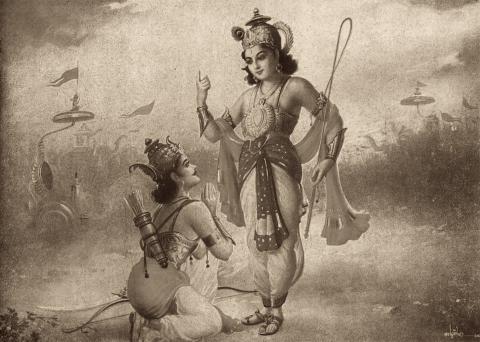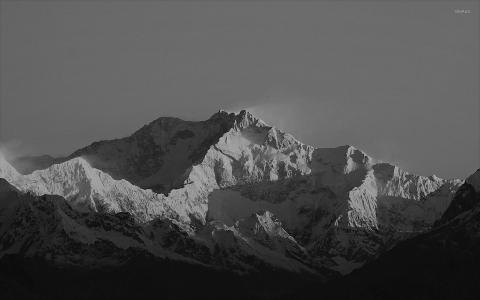
Having now reflected upon the steps to attain the right level of eligibility, let us think once again about the four problems due to changing times.
1) The deterioration of the system of the four varṇas
The chief among the cardinal teachings of the Bhagavadgītā is to be established in one’s own dharma. One’s own dharma is determined by the four-fold varṇa system. Brāhmāna, kṣatriya, vaiṣya, śūdra - are all different varṇas. Their dharmas are...

What about the jñānī? He too has to perform karma but instructing him is not necessary. He performs karma without any guidance. Karma is imperative as long as the body exists. Life in the physical plane implies contact with the world. Even the most knowledgeable cannot escape it. If that is the case, what is so unique about a jñānī’s knowledge? The answer is that a jñānī’s karma does not result in individual results for him. It was mentioned...

Let us now remember and discuss these in some detail.
1) The pre-eminence of the self: The ātmā (self) is the essence of all beings. Whenever man thinks, "I","me", the referent of the "I" is the jīva. Both the jīva and its support and instrument - the body with sense organs and the mind - are referred to as the ātmā. The ātmā marked by an association with the body-sheath is known as the jīvātmā. In principle, the ātmā is distinct from the...

The Gītā is not a treatise with a limited outlook for one set of people. It is beneficial to the entire humankind. We firmly believe that the principles taught by the Gītā ought to be honoured by people of all countries, whatever stage they may be in. Their lives too would benefit from an application of the teachings of the Gītā. This treatise is for all humankind. This was not born only for the brāhmaṇas or the country of Bhārata. If it is said...

Section 20 / Conclusion
We had a second look at the Gītā. What did we gain for our own use?
Whatever be the śāstra or art that we set out to learn, there are two approaches towards its study. The first one is a theoretical approach - marked by reasoning and reaching an intellectual conclusion. The second is a practical approach - the experimental realisation of the subject of study. Just as we need both feet to walk, we need both theory and...

2. Universal self-hood (Atmaupamya): is the perfection of knowledge; its ripe fruit. Intellectual conviction is achieved via reflection upon the śāstras and refined by life’s training. This conviction is then transformed into experience through contemplation. Such a knower sees himself everywhere. He looks upon the world with the same affection as a mother would her children. All lives are his own. Just as a mother’s life mingles with her...

How can there be adharma for one established in the origin of dharma? For such a person, there is no other object or being than Brahma. Whence pāpa for him? The ocean wipes out the many colours, tastes, and characteristics of the waters of the rivers that meet it - merging them all together into an indivisible oneness. The ocean of Brahma similarly extinguishes the individual characteristics of those who take refuge in it, transforming them into...

A doubt here. "sarvadharmān parityajya" (having given up all dharmas), "māmekaṃ śaraṇaṃ vraja" (surrender unto Bhagavān alone) - is the instruction. Fine. What is the intent behind - “surrender after having given up all dharmas”? Isn’t surrender a dharma too? Or is surrender an adharma? If the verse had "anya-dharmān" (giving up other dharmas) instead of "sarva-dharmān" (giving up all dharmas), this doubt would not have arisen.
Retaining the...

There was a rich man I knew. When all members of his household were asleep, he would enter his room with a small lantern, open his iron safe, noiselessly remove the bundles of currency notes and jewellery one by one from it, caress them fondly, count them again and again, exult at owning all of it, put all of it back again into the safe, lock it, and tie the key to his yajñopavīta[1]. He experienced happiness in looking upon his wealth by...

There is a set of rules for the riders on the merry-go-round. The rider should proceed in his path and not collide with those ahead of him and those who follow him. Dharma is such a set of rules. If any of those rules is violated - say, the front rider does not leave way for the rider behind him or if a following rider drags the one ahead of him down - it is a sign that the rider has forgotten about the machine operator and that he has to be...
